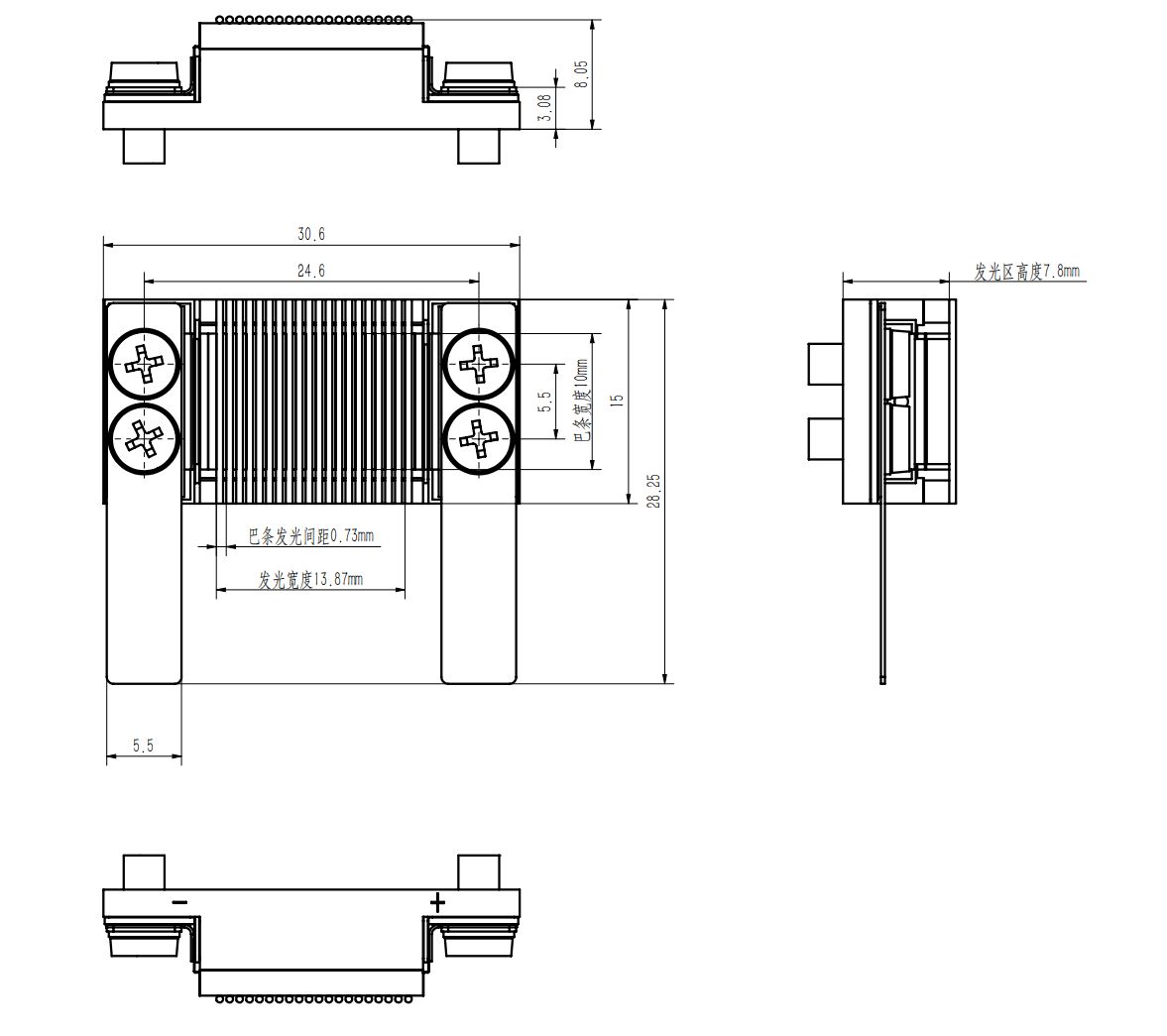Subscribe to Our Social Media For Prompt Post
Introduction
With rapid advancements in semiconductor laser theory, materials, manufacturing processes, and packaging technologies, along with continuous improvements in power, efficiency, and lifespan, high-power semiconductor lasers are increasingly used as direct or pump light sources. These lasers are not only widely applied in laser processing, medical treatments, and display technologies but are also crucial in space optical communication, atmospheric sensing, LIDAR, and target recognition. High-power semiconductor lasers are pivotal in the development of several high-tech industries and represent a strategic competitive point among developed nations.
Multi-Peak Semiconductor Stacked Array Laser with Fast-Axis Collimation
As core pump sources for solid-state and fiber lasers, semiconductor lasers exhibit a wavelength shift towards the red spectrum as working temperatures rise, typically by 0.2-0.3 nm/°C. This drift can lead to a mismatch between the emission lines of the LDs and the absorption lines of the solid gain media, decreasing the absorption coefficient and significantly reducing the laser output efficiency. Typically, complex temperature control systems are used to cool the lasers, which increase the system's size and power consumption. To meet the demands for miniaturization in applications like autonomous driving, laser ranging, and LIDAR, our company has introduced the multi-peak, conductively cooled stacked array series LM-8xx-Q4000-F-G20-P0.73-1. By expanding the number of LD emission lines, this product maintains stable absorption by the solid gain medium over a wide temperature range, reducing the pressure on temperature control systems and decreasing the laser's size and power consumption while ensuring high energy output. Leveraging advanced bare chip testing systems, vacuum coalescence bonding, interface material and fusion engineering, and transient thermal management, our company can achieve precise multi-peak control, high efficiency, advanced thermal management, and ensure long-term reliability and lifespan of our array products.
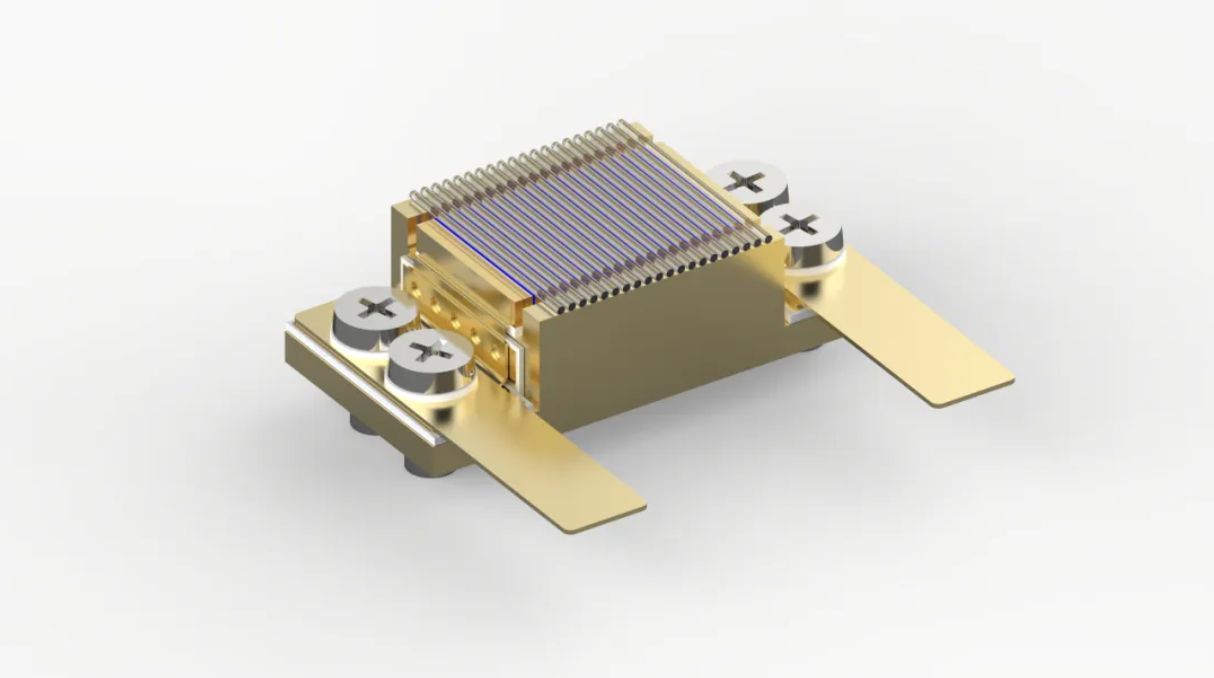
Figure 1 LM-8xx-Q4000-F-G20-P0.73-1 Product Diagram
Product Features
Controllable Multi-Peak Emission As a pump source for solid-state lasers, this innovative product was developed to expand the stable operating temperature range and simplify the laser’s thermal management system amidst trends towards semiconductor laser miniaturization. With our advanced bare chip testing system, we can precisely select bar chip wavelengths and power, allowing control over the product's wavelength range, spacing, and multiple controllable peaks (≥2 peaks), which broadens the operational temperature range and stabilizes pump absorption.
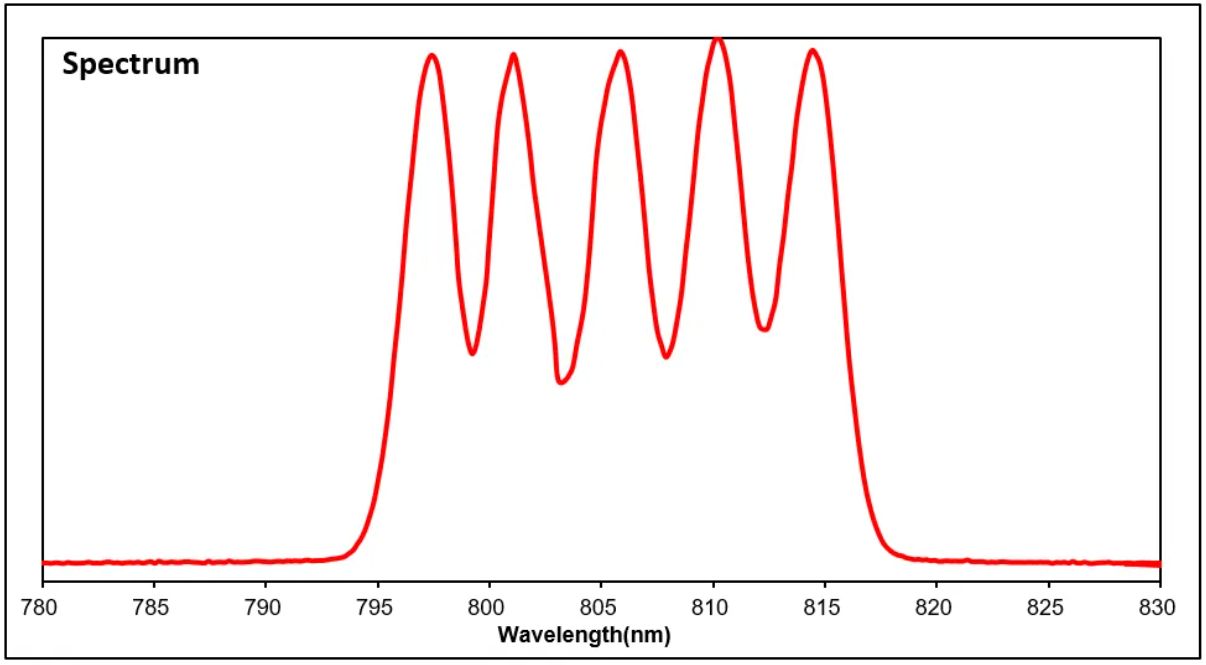
Figure 2 LM-8xx-Q4000-F-G20-P0.73-1 Product Spectrogram
Fast-Axis Compression
This product uses micro-optical lenses for fast-axis compression, tailoring the fast-axis divergence angle as per specific requirements to enhance beam quality. Our fast-axis online collimation system allows for real-time monitoring and adjustment during the compression process, ensuring that the spot profile adapts well to environmental temperature changes, with a variation of <12%.
Modular Design
This product combines precision and practicality in its design. Characterized by its compact, streamlined appearance, it offers high flexibility in practical use. Its robust, durable structure and high-reliability components ensure long-term stable operation. The modular design allows for flexible customization to meet customer needs, including wavelength customization, emission spacing, and compression, making the product versatile and reliable.
Thermal Management Technology
For the LM-8xx-Q4000-F-G20-P0.73-1 product, we use high thermal conductivity materials matched to the bar's CTE, ensuring material consistency and excellent heat dissipation. Finite element methods are employed to simulate and calculate the device's thermal field, effectively combining transient and steady-state thermal simulations to control temperature variations better.
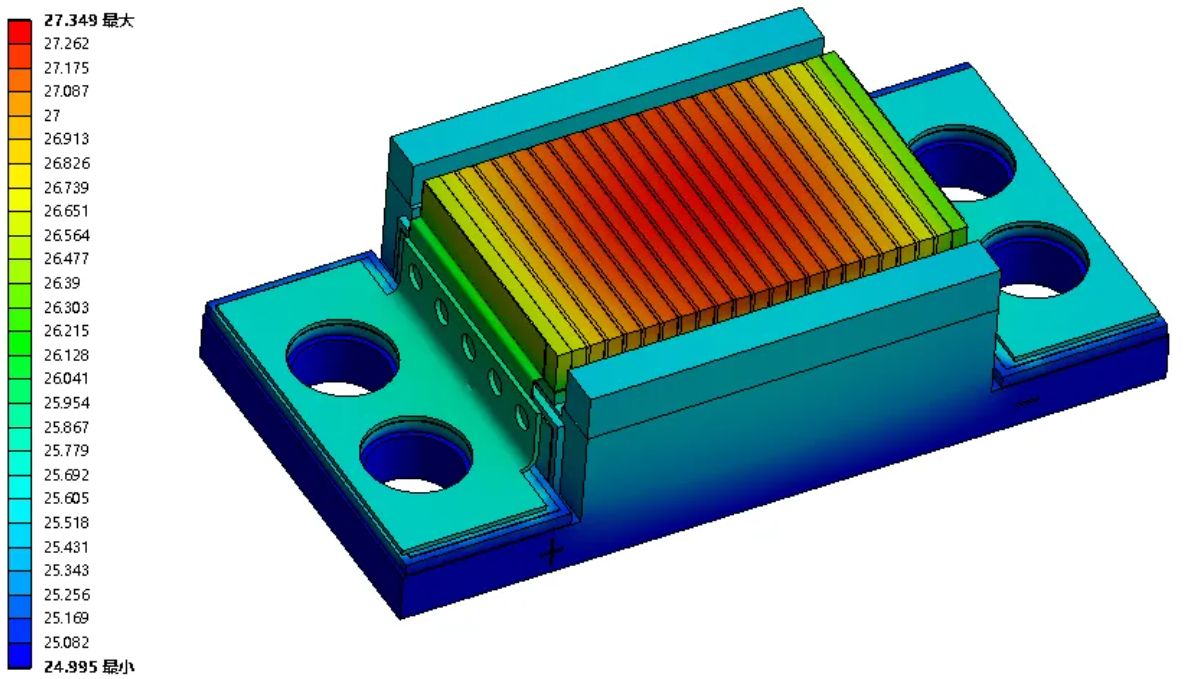
Figure 3 Thermal Simulation of LM-8xx-Q4000-F-G20-P0.73-1 Product
Process Control This model uses traditional hard solder welding technology. Through process control, it ensures optimal heat dissipation within the set spacing, not only maintaining the product’s functionality but also ensuring its safety and durability.
Product Specifications
The product features controllable multi-peak wavelengths, compact size, light weight, high electro-optical conversion efficiency, high reliability, and long lifespan. Our latest multi-peak semiconductor stacked array bar laser, as a multi-peak semiconductor laser, ensures that each wavelength peak is clearly visible. It can be precisely customized according to specific customer needs for wavelength requirements, spacing, bar count, and output power, demonstrating its flexible configuration features. The modular design adapts to a broad range of application environments, and different module combinations can meet various customer needs.
| Model Number | LM-8xx-Q4000-F-G20-P0.73-1 | |
| Technical Specifications | unit | value |
| Operating Mode | - | QCW |
| Operating Frequency | Hz | 20 |
| Pulse Width | us | 200 |
| Bar Spacing | mm | 0. 73 |
| Peak Power per Bar | W | 200 |
| Number of Bars | - | 20 |
| Central Wavelength (at 25°C) | nm | A:798±2;B:802±2;C:806±2;D:810±2;E:814±2; |
| Fast-Axis Divergence Angle (FWHM) | ° | 2-5(typical) |
| Slow-Axis Divergence Angle (FWHM) | ° | 8(typical) |
| Polarization Mode | - | TE |
| Wavelength Temperature Coefficient | nm/°C | ≤0.28 |
| Operating Current | A | ≤220 |
| Threshold Current | A | ≤25 |
| Operating Voltage/Bar | V | ≤2 |
| Slope Efficiency/Bar | W/A | ≥1.1 |
| Conversion Efficiency | % | ≥55 |
| Operating Temperature | °C | -45~70 |
| Storage Temperature | °C | -55~85 |
| Lifetime (shots) | - | ≥109 |
Typical values of test data are shown below:
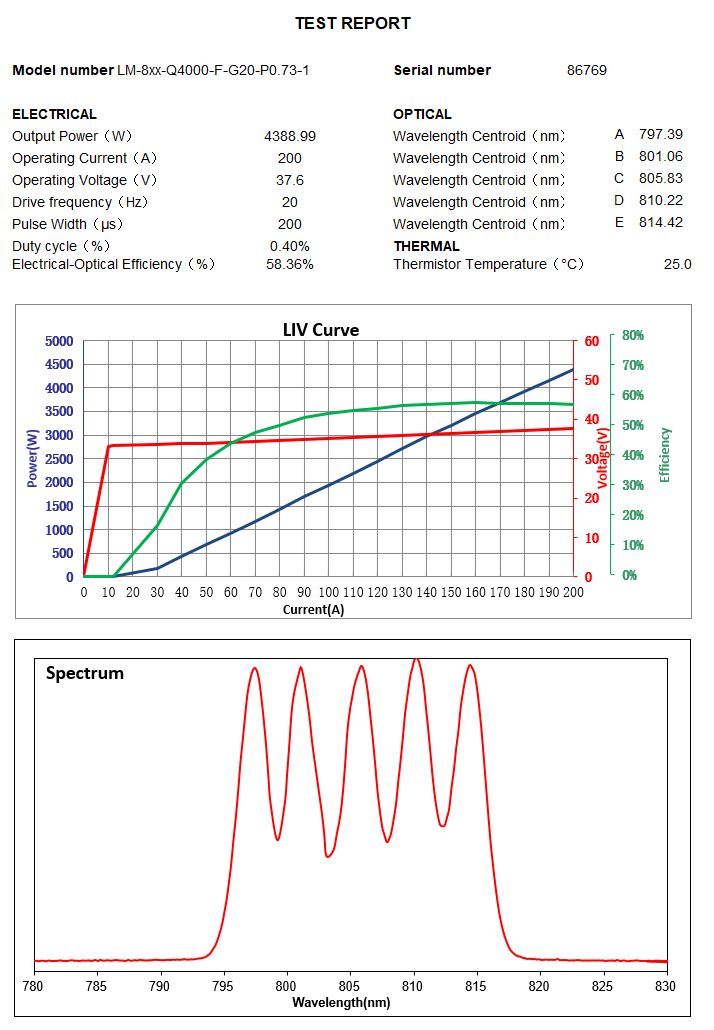
Post time: May-10-2024

